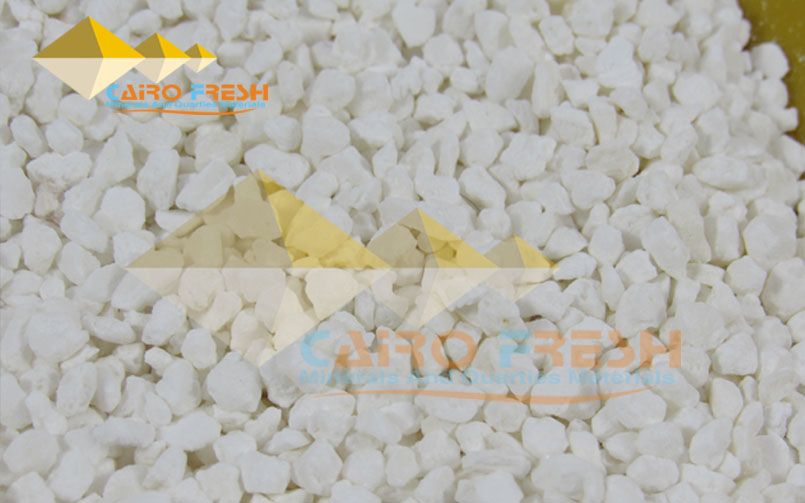Sustainable Silica Sand Mining Practices
Introduction: The Silent Extraction
Silica sand, a seemingly ubiquitous and unassuming mineral, is a key ingredient in countless industrial applications, from glass manufacturing to hydraulic fracturing. However, the process of extracting silica sand, a practice known as silica sand mining, can have significant environmental consequences. In this 1000-word SEO article, we will delve into the environmental impact of silica sand mining and the regulations in place to mitigate its effects.
1. The Environmental Impact of Silica Sand Mining
Silica sand mining, like any form of mining, has the potential to disrupt ecosystems, harm wildlife, and affect local communities. Here are some of the primary environmental concerns associated with silica sand mining:
2. Habitat Disruption
Silica sand deposits are often found in ecologically sensitive areas, including wetlands and dunes. Consequently, mining activities can lead to the destruction of these habitats, thereby causing the displacement or endangerment of plant and animal species.
3. Water Contamination
Moreover, mining operations require vast amounts of water to process and wash the silica sand. As a result, the discharge of this water can carry sediments and contaminants into nearby water bodies, potentially polluting them and disrupting aquatic ecosystems.
4. Air Quality Issues
Similarly, dust emissions from silica sand mining sites can lead to air quality concerns. Specifically, fine particles of silica dust, when inhaled, pose health risks to both workers and nearby residents. Over time, long-term exposure can result in respiratory diseases like silicosis.
5. Impact on Hydrology
Furthermore, mining can alter the hydrology of an area, affecting groundwater levels and the flow of nearby rivers and streams. This can have consequences for water availability and aquatic ecosystems.
6. Landscape Alteration
Likewise, mining operations often result in significant changes to the landscape, including the creation of deep pits and extensive infrastructure. Naturally, these alterations can be visually unappealing and disrupt the natural aesthetic of an area.
7. Regulations Governing Silica Sand Mining
To mitigate the environmental impact of silica sand mining, governments and regulatory bodies have implemented various measures and regulations. These regulations aim to strike a balance between the economic benefits of mining and the protection of the environment. Here are some key regulatory aspects:
8. Environmental Impact Assessments (EIAs)
Moreover, many jurisdictions require mining companies to conduct comprehensive EIAs before commencing operations. Consequently, these assessments evaluate the potential environmental impacts of mining activities and propose mitigation measures.
9. Mining Permits and Licenses
Similarly, mining operations typically require permits or licenses that specify the conditions and limits of extraction. Likewise, authorities may impose restrictions on extraction rates, water usage, and reclamation requirements.
10. Reclamation and Remediation
Furthermore, reclamation plans are often a mandatory part of mining permits. As a result, these plans outline how the mining site will be rehabilitated once extraction is complete, with the goal of restoring it to a condition close to its original state.
11. Water Management
Additionally, regulations often govern the use of water in mining operations. Therefore, companies may be required to implement water recycling and treatment systems to minimize water usage and reduce contamination risks.
12. Dust Control Measures
In the same way, to address air quality concerns, mining operations are often required to implement dust control measures, such as using water sprays, dust barriers, or dust suppressants.
13. The Path Forward: Sustainable Silica Sand Mining
Likewise, silica sand is a valuable resource that plays a vital role in various industries. Hence, to ensure its sustainable extraction, industry stakeholders, regulators, and environmental organizations must work collaboratively. Here are some strategies for achieving sustainable silica sand mining:
14. Technological Innovation
For example, investing in advanced mining technologies can help reduce the environmental footprint of silica sand mining. This includes dust control technologies, water recycling systems, and more efficient extraction methods.
15. Habitat Restoration
Mining companies can proactively engage in habitat restoration efforts to offset the environmental impact of their operations. Restoring wetlands and dunes, for example, can help mitigate habitat disruption.
16. Community Engagement
Engaging with local communities and addressing their concerns is crucial for sustainable mining practices. Mining companies can contribute to community development and implement transparent communication strategies.
17. Monitoring and Compliance
Continuous monitoring of mining operations and strict adherence to regulations are essential to minimize environmental impact. Regulators should ensure that companies comply with environmental standards.
Conclusion: Sustainable Silica Sand Mining Practices
Silica sand mining is a testament to the challenges of balancing economic development with environmental conservation. While it is indispensable to various industries, its extraction must be carried out responsibly and sustainably. Rigorous regulations and responsible mining practices can help mitigate the environmental impact of silica sand mining, preserving our natural ecosystems for future generations.
For more information please contact us

